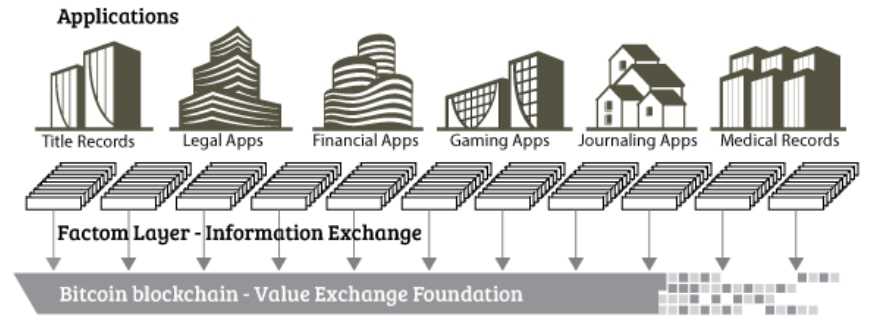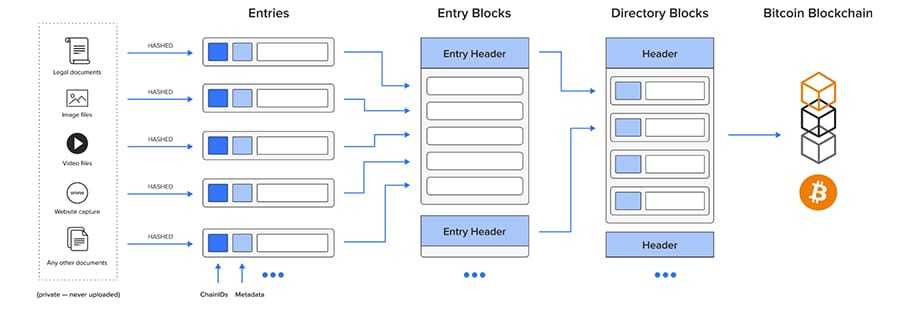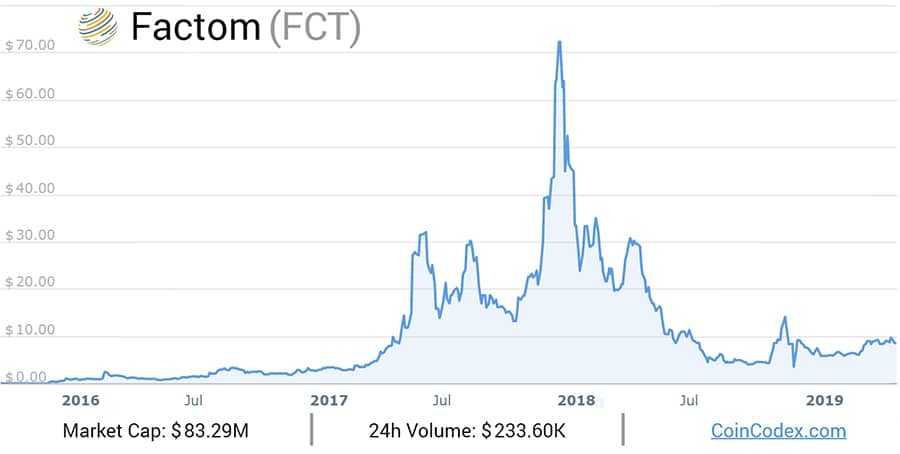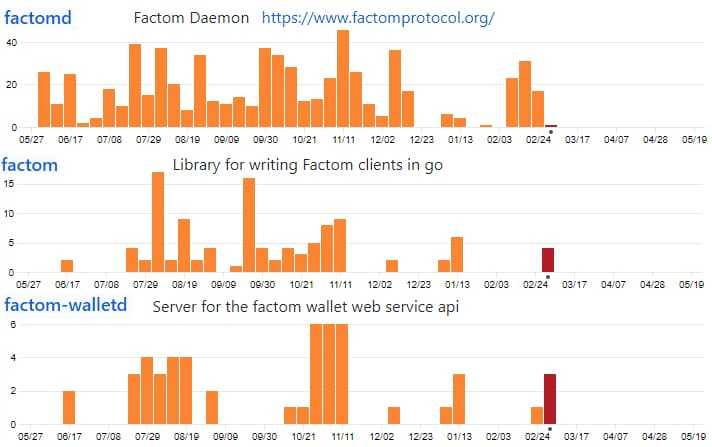Factom Review: Blockchain Protocol For Company Record Keeping
Factom (FCT) is a unique and interesting blockchain protocol that was developed for companies to create their own records systems.
It is an open source and decentralised data integrity protocol that is built by a collection of companies. The protocol was developed as a simple solution which can be integrated with any internal record keeping system in a cost-effective manner.
However, is Factom still a viable project?
In this Factom review, I will give you everything that you need to know about the project including tech, roadmap and development. I will also look at the use cases and adoption potential of FCT tokens.
What is Factom?
Factom is making it cheaper and easier for businesses to use the blockchain for data storage by separating its immutability from the digital assets that are associated with blockchains. It is doing so on the Bitcoin network and attempts to solve the three primary problems of the Bitcoin network:
- Transaction Speed – Because blocks take 10 minutes to create, and the community standard is for six network confirmations to fully validate a transaction, it can take over an hour for a transaction to be confirmed, and some take far longer.
- Transaction Cost – As the network handles an increasing number of transactions, the mining fees for those transactions continue to grow.
- Network Bloat – The number of transactions per second on the Bitcoin network is capped by its 1 MB block size. And the current visions of Segregated Witness and the Lightning Network aren’t likely to be enough improvement to provide a long-term solution to network bloat.
Factom also adds easy auditing of any data it stores, which makes the secure and accurate data storage it provides even less expensive and more attractive for businesses and other organizations.

Factom is most useful for businesses that regularly need to transfer important data and ensure it remains accurate and not tampered with. Some good examples are medical documents or land deeds and titles.
Storing this data on the blockchain makes it immutable and provides immense value to businesses that rely on accurate data. It is far less expensive and far more permanent when compared with current digital storage or paper records.
The Factom Chain
The Factom storage chain has been called complex, but you can think of it in simple terms. Basically the Factom chain stores hashes, or links to your documents. This reduces bloat significantly. There are Chains and there are Entries, with the Chains being similar to a folder, and the Entries being similar to files.
This is necessary since entries have a maximum size of 10KB. By using Chains you can link multiple Entries that comprise large files. And the Chains contain the ID of each file to allow for ease of auditing.
There are then Entry Blocks comprised of all the hashes in a particular Chain ID. Each minute the Federated servers pull together all the Entry Blocks created and place them in a Directory Block.

Then every 10 minutes the 10 Directory Blocks created are anchored to the Bitcoin blockchain by a randomly chosen Authority node.
This design makes it both inexpensive and easy to save records that can be audited later. This is because unlike Bitcoin and other blockchains, where the entire chain is needed for validation, Factom uses the Directory Blocks and Chain IDs for validation, which greatly reduces the bandwidth required for auditing saved records.
Factom’s Three Consensus Servers
The consensus algorithm used by Factom is similar to the Raft algorithm. The Factom network reaches consensus through the random election of a leader from the pool of Federated Servers.
These Federated servers are the primary servers and are the only ones who can write data to the blockchain and receive mining rewards.
There are a set number of Federated Servers, and they continue to broadcast their existence on the network by producing a “heartbeat message.” If that heartbeat message isn’t heard by the followers, they will immediately choose a new Federated Server to replace it.
The Federated Servers have their work double-checked by Audit Servers, and any time an Audit Server locates a mistake the Federated Server gets downgraded to become an Audit Server itself, while one of the Audit Servers upgrades to take the Federated Server’s place. Audit Servers do not receive rewards.
Finally, there are Follower Servers who are there to make transaction requests. They receive entry requests and forward them to the Federated Server for processing. Follower Servers also do not receive any rewards.
Use Cases for Factom
If a cryptocurrency is to have value it’s underlying blockchain has to provide some real world use. Factom certainly does as there are multiple industries that can benefit from secure and efficient data storage, with inexpensive auditing capabilities.

Below are just a few examples of Factom real-world use cases:
- Healthcare Records – This is an excellent opportunity for Factom to be put to use since healthcare records require storage, confirmation and data validation. This sector also contains huge volumes of data that needs to be transmitted and updated frequently.
- Mortgage Data – Banks create and store mortgage data for tens of millions of clients, and Factom can make this storage more efficient and inexpensive. Current methods of storage are expensive and prone to errors or manipulations, but Factom is inexpensive and immutable.
- Legal Documents – There are certain documents that require notarization, but have no way to prove who signed the documents. With Factom any signed documents cannot be manipulated later, and can be proven authentic.
As you can see there are many applications for Factom, spanning the entire range of industries that need to store data.
The Factom Team
Factom is one of the older blockchain projects, having started in 2014. Since then it has made steady progress, making it one of the better blockchain projects.
The very first version of Factom was released in early 2015 and was followed by the project’s ICO. Later that year they were accepted into the Plug & Play FinTech accelerator, and then in 2016 they were chosen as one of the A-List startups in Austin, Texas, which is where the project is based.

The CEO of Factom is Paul Snow, who is also the founder of the project. He was also the founder of the Texas Bitcoin Conference and is the founder and Chief Architect for DTRules, a open source project he founded in 2004 to make Decision Table based Rules Engines available to all sorts of projects.
The Factom platform already has over 11 million entries and has forged some notable partnerships. They work with the Gates Foundation to store the medical records of those in developing countries, and have done work with the U.S. Department of Homeland Security in providing audit trails for data from the U.S. borders.
The Factom Community
As we all know, a vibrant community can be extremely helpful in the growth trajectory of a blockchain and its cryptocurrency. Considering that Factom is focused more on businesses than individuals it could be that it isn’t too interested in growing its community on social media.
Actually, that’s not the case at all. The Factom Twitter account has 75,400 followers, even though they typically don’t tweet more than a few times a week. And the subreddit for Factom, which is often a good measure of the popularity for blockchain projects, shows nearly 8,700 readers.
The project also has nearly 6,000 Facebook followers and over 2,300 members of its Discord channel. Its social media presence isn’t as huge as some projects, but it is large enough to show that the cryptocurrency community believes in the Factom project.
Factom Tokens
Unlike most other blockchain solutions, Factom uses two different tokens on its network:
- Factoids (FCT): Factoids are coins that are used to decentralize the network and prevent user spam. Like other cryptocurrencies, they can be freely traded and are listed on cryptocurrency exchanges. They are also used as the incentive for maintaining the network, and are paid out to the Federated servers at a rate of roughly 73,000 FCT per month.
- Entry Credits (ECs): Entry Credits are used to pay for Entries or to vote for Authority nodes. They have little intrinsic value of their own and can be purchased with Factoids or with the currency of your choice, but only through the Factoid platform.

When Entry Credits are spent to add data to Factom’s blockchain the corresponding amount of Factoids are burned i.e. removed from the system permanently.
Because Entry Credits can be purchased with any currency it opens the Factom platform to those who don’t understand cryptocurrency, or simply don’t want to use it. They simply buy their Entry Credits with whatever currency they like, and then Factom buys and burns the corresponding amount of Factoids on the open market.
FCT Price Performance
Factom held its ICO all the way back in 2015, over a 45 day period from March 31 to May 15. Over that time it was able to raise $541,000, which seems small now, but was quite good in 2015.
FCT debuted at $0.21 and fell for the initial six weeks of its existence, hitting a low around $0.07 in December 2015. It jumped massively from there and was trading above $1 by January 2016. It never looked back.
The coin made a slow and steady advance until 2017, when it got caught up in the fervor surrounding the entire cryptocurrency market. Unlike some coins that only caught the end of the rally, FCT actually pumped three times in 2017. The first was in June, and the coin reached a high of $33.72 before dropping back.
It then spiked higher again in August, stopping just shy of the $30 level. It dropped back again and made its strongest move from November 2017 through January 2018, reaching an all-time high of $87.16 on January 7, 2018.

After that incredible high the coin fell alongside the rest of the cryptocurrency markets for most of 2018, finally bottoming around $4 in October 2018. It was actually one of the first cryptocurrencies to find a bottom in the 2018 bear market, and it began rising in November 2018. It traded above $10 in December 2018 pulled back for several weeks, and climbed again to its recent price of $8.60 as of May 21, 2019.
Because the price of FCT is directly related to network usage, the early bottom may indicate increased business adoption of the platform.
FCT benefits from burning, and once the burn rate outstrips the 73,000 monthly creation rate, the FCT currency will become deflationary. This should boost the price even further.
FCT Trading & Storage
Those interested in purchasing some FCT can do so on a limited number of exchanges, including Bittrex, Poloniex and UpBit.
Bittrex controls 60% of the token volume followed by Poloniex at about 27%. The volume on these exchanges is rather low if we were to compare it to the market capitalisation of the coin. This could prove to be a challenge for liquidity should you ever want to buy / sell a large collection of coins.
There are alternative methods to get your hands on FCT. You could use a non-custodial exchange such as Changelly. These exchanges do not hold any coins and only facilitate the transfer from the buyer's wallet to the seller's.
When it comes to storing FCT you don’t have a whole lot of choice. The number one recommended choice is to download and install the Factom Enterprise Wallet. It can be downloaded from Github and installation instructions are here.
If you plan on holding your coins for an extended period of time in an offline environment, then you can also store FCT on the Ledger Nano hardware wallet. These are perhaps the safest option as the private keys are kept on the device safely away from the reach of hackers.
Factom Development & Roadmap
Given that Factom is an open source project, their code is easily available for the general project in public repositories. It is also a great way to see exactly how much code is being pushed and hence how much work is being done.
Hence, I decided to jump into Factom's GitHub to check out how much activity there is in their repositories. There are over a hundred repositories but below are the code commits for the top 3 most active repos.

These are a reasonable number of commits and it shows that the developers are still hard at work updating the protocol. It is also worth pointing out that there are a further 105 repos in their GitHub but the bulk of these have been inactive over the past year.
Comparing these code commits to other projects, Factom ranks at number 80 on CryptoMiso and number 78 on CoinCodeCap. So, they are not as active as some of the newer project but are still well represented in the top 100 list. Of course, measuring project purely on code commits can be quite arbitrary but it is a great rule of thumb.
Something that you may want to watch from a development perspective is their upcoming "Bond" release. This will carry a number of fixes to the protocol that cropped up with a recent release of v 6.2.2 onto the Factom main-net. You can read more about these fixes and the update here.
Conclusion
The Factom solution to data storage and auditing of records is meant to change entire industries. With the increasing number and scope of data security breaches, it is obvious that a secure and immutable blockchain based solution is needed, and Factom is working to deliver such a solution.
Moving away from the current centralized databases is a logical step in securing data, making storage more efficient, and less expensive. The use of a blockchain solution will give businesses complete control and security over their data.
Yes, this is a revolutionary method for storing, retrieving and auditing data, and Factom is committed to making businesses understand just how valuable the switch from centralized to decentralized can be.
So far Factom has been used in limited cases for medical records and land deeds, but in the future it could be used to secure our digital and financial records, keeping them safe from hackers. And by making this data immutable on the blockchain we will see a significant reduction in fraud, data manipulation, and corruption.
Factom has a good track record, and has continued making steady progress, acquiring new customers and partners. If that track record continues Factom might be one of the best long-term blockchain investments currently available.
Disclaimer: These are the writer’s opinions and should not be considered investment advice. Readers should do their own research.
